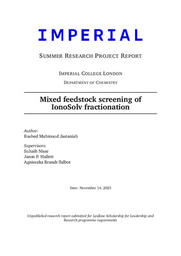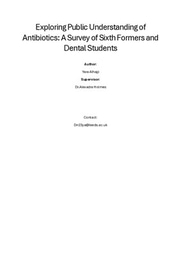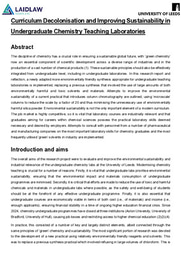Engineering Alginate–Pectin Hydrogels for Scalable Cultivated Meat

Conventional meat production is one of the biggest contributors to global greenhouse gas emissions, land degradation, and antibiotic resistance — and as the world’s population grows, the system is becoming increasingly unsustainable. Cultivated meat, grown from real animal cells without the need for slaughter, offers a more ethical and sustainable alternative. However, one of the most pressing technical challenges is recreating the structure and texture of real meat — not just producing cells, but turning those cells into something consumers will recognise and enjoy.
My Laidlaw research, supervised by Dr. Petra Hanga in the Department of Biochemical Engineering at UCL, tackles this challenge by focusing on the development of edible scaffolds using hydrogel fibres made from alginate and pectin. These two food-safe, plant-derived polymers are crosslinked using calcium chloride to create a gel matrix that can encapsulate living cells and support their growth in three dimensions.
Our method begins by culturing mammalian cells in vitro — initially using the well-established C2C12 myoblast cell line, with plans to transition to mesenchymal stem cells later in the project for a more versatile muscle tissue model. Once the cells reach the desired confluency, we suspend them in a hydrogel precursor blend of alginate and pectin. This cell–polymer mixture is then processed using the Büchi B-395 Pro Cell Encapsulator, a precision droplet generator that extrudes the blend into a calcium chloride bath, instantly forming crosslinked hydrogel fibres. These fibres trap the cells within a soft, supportive matrix, mimicking the early stages of tissue formation.
After encapsulation, the cell-laden fibres are incubated in nutrient-rich media to allow continued growth, proliferation, and potential differentiation. Throughout the project, I’ll be assessing the performance of different alginate–pectin ratios and formulations by evaluating cell viability using GFP-based live/dead staining, cell proliferation via counting, and qualitative assessment of cell morphology and alignment. I will also be investigating early signs of cell differentiation, to understand how the mechanical and chemical environment of the scaffold influences muscle development.
In addition to biological performance, I’m analysing key physical properties of the hydrogels — including viscosity, flexibility, and overall handling characteristics — which will be critical for eventual scale-up into industrial systems. The aim is to identify a formulation that not only supports healthy cell growth but is also practical to manufacture, manipulate, and integrate into future cultivated meat production pipelines.
This research will give me hands-on experience in hydrogel formulation, biomaterials characterisation, cell culture, and encapsulation technology. More broadly, it contributes to the emerging field of cellular agriculture by exploring how we can move beyond ground meat products to structured, realistic meat alternatives that consumers will accept at scale.
I’m excited to be part of a project that blends engineering, cell biology, and sustainability — and to contribute to the long-term goal of changing how the world produces and consumes their protein.





Please sign in
If you are a registered user on Laidlaw Scholars Network, please sign in
This looks amazing Ayaan!!! As a veggie I’m very interested in how your project turns out